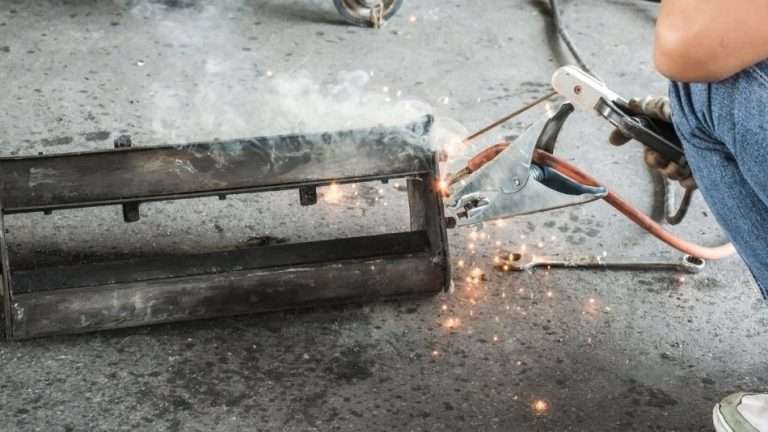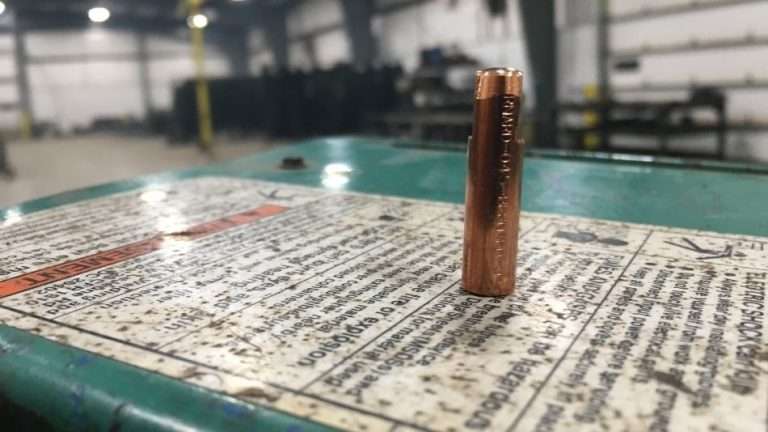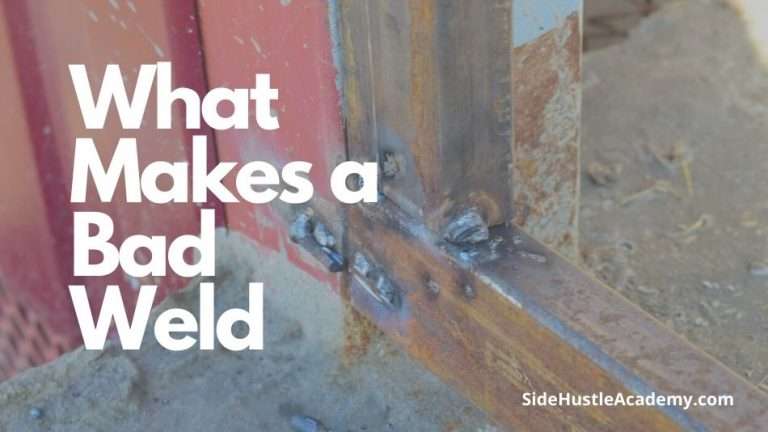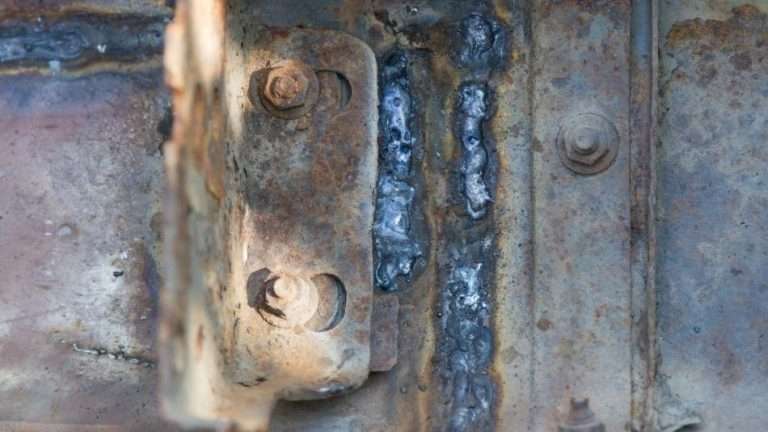How Many Inches Can a Welder Weld Per Day?

In a recent article, I discussed determining how much you should charge hourly for your welding business. This is just one way to price your services for your business; another is to charge the amount of welded inches. The question is, how many inches can a welder weld per day?
Welders can average 100 to 200 inches of weld per day. However, this all depends on setup time, prep time, the type of job you are welding, machine maintenance, cool downtime, and any rework you may have to do.
However, I’ve found in my shop that I can far exceed these numbers if I have things set up properly, but when you average out the days, you’re only looking at around 100 to 200 inches at best.
In the article below, I will share how to track the number of inches you can weld and how much to charge per inch.
How Many Inches Can a Welder Weld Per Day?
It is important to gauge your welding in inches per day and get an overall estimate. This is best accomplished by recording how many inches you weld in a week or two. If possible, a month or longer is ideal.
Doing this can remove many factors that will give you an inaccurate estimate. Some of the things that will give you a bad estimate include:
- Set-up time
- Prep time
- Machine maintenance
- Cool down time
- Re-work
Estimating how many inches you or your employees can weld may take a month or longer. This is fine.
By doing this, you can get a much more accurate number than if you were to base it off one day or just a few days. There are many reasons to spread this out over a larger amount of time, such as:
- More accurate measurement
- Take outside factors into consideration
- This will give you an average number of inches per day
- Welding 500 inches one day but only 100 over the next three days.
- Differences in new and experienced welders
- Prep time
You can do things to make this process easier and more accurate.
You want this to be as accurate as possible so that you can confidently make the correct decision when you apply or bid for future jobs. Some of these things that can help you achieve this accuracy are:
- Making Spreadsheets
- Have employees keep track of their inches per day
- Keep track of inches per day, every day
- Take care of prep work the day before
- Adding A.I. Welders
Why Measure Your Welds in Inches Per Day
There are many reasons to measure your welding in inches per day. It is, over time, the most accurate way of knowing how much welding you or your employees can accomplish in one day.
This information will allow you to properly bid or apply for jobs based on how long the total job will take you to complete. Some of the reasons include:
- It is the industry standard of measurement
- The most accurate way of knowing how long a specific job will take
- Knowing how much one welder does versus another
- You can give an accurate price for any job
- Estimate how many different jobs you can handle per month or year
Knowing how much to charge for a job is vital to any business. You must have the most accurate information available to make this decision.
Your overhead cost is how much money it takes to operate your business as a whole or on a per-welder basis.
A simple math equation involving your business’s overhead per welder, divided by how many inches you or your employee can weld daily, will give you a great baseline number to base your charge amount. Use this equation:
Hourly Rate Multiplied by the Hours Worked Divided by the Inches Welded that Day [hr X hw / iw]
If a welder does 200 inches a day and your overhead cost is $50 an hour times 8 hours, that would be $400 divided by 200 inches. You would charge $2.00 for every inch of welding.
This equation can be a great starting point for any welding business.
It is important to know exactly what your cost going out is, as this must factor in how much you charge for each day, each job, or each project.
You first must cover your overhead, which consists of, but is not limited to:
- Building cost
- Welder wages
- Power bills
- Supplies
- Insurances
- New products
It will also give you the best way to gauge how long a specific job will take if you know the number of inches the total job is and how many inches you or your employee can weld per day. The simple equation below will give an example of how to judge this:
If a job takes 1000 inches of welding at $2.00 per inch, then it will cost roughly $2000 to weld that job or 60 hours of labor.
The number of inches that each welder can weld will change based on many factors on its own. Some of these factors include, but are not limited to:
- Their experience level with welding
- What is the size of that specific project is
- Are the welds in long and straight lines
- How much prep and downtime will be involved?
To gain the greatest number of inches per day welded, try to minimize the time each welder is down.
While this may mean hiring more employees at a cheaper wage to do the set-up work, it can often mean larger profit margins in the long run.
The time a welder can spend prepping their work will reduce the time they spend welding.
That is why getting your estimates over a larger time rather than just one or two days is important. If you are on a production line style production, this will greatly simplify the process.
However, with the ever-changing kinds of projects, this is not how most welding companies are set up.
The Problems with Measuring by the Inch for Welding
Even though it is the industry standard, some issues come with it. Even with problems with measuring your work by an inch, it is still the best way to judge how much work you can finish in one day.
Related Article: How Much Should You Charge For Welding Per Hour
Some of the problems that come with measuring welds by the inch are:
- The amount of welds changes day by day.
- Downtime for prep work
- Non-linear welding takes longer than linear welding.
- Possibility of re-work or repairs
While measuring welds by inch is the standard of the welding industry, many companies opt to forbid their jobs in other ways.
Knowing how many inches you can weld in one day is the basis for knowing how much to charge for a specific project or job. It will also depend a lot on what your capabilities are. Such as, but not limited to:
- Number of welders running
- Amount of space available
- How many employees are available?
- Do the welders have to do their prep work?
- Is it possible to minimize the downtime for the welder?
There are different options available to charge for your work. This will depend on the capabilities that we discussed in the last section. Some different ways of charging for your work include:
- By the hour
- By the project
- By the piece that gets finished
- Flexible pricing depending on job changes
- Per Welder
In conclusion, everything we have discussed will affect how many inches per day you can weld. It is important to take as much into consideration as possible, so you may get an accurate measurement.
As a quick recap, here are some important things to remember:
- Base the information on weeks, not days
- Amount of prep time for each piece
- The experience level of each welder
- Minimize downtime for the welders
- Linear or non-linear welding






